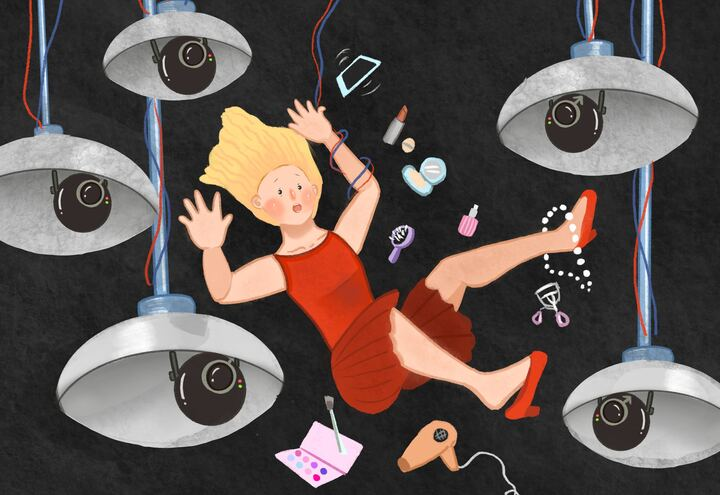The age old question: who are you when no one is watching? But in 2025, who isn’t watching?
The sinister sense that we are being recorded, followed, observed, judged and evaluated — even in the seclusion of our private homes — is a repercussion of social media surveillance. An invasive look into the train rides, family vacations, dorm move-ins and small milestones of people we met once or have never met creates an expectation, within ourselves, that random acquaintances and even complete strangers care and should know about what we are up to.
While the invisible impulse to market the self as if it were a product and create a spectacle out of life’s mundane moments may seem like a new consequence of social media, this is not a new phenomenon for young women. As the writer Maragret Atwood said, some women have an imaginary male onlooker peeping through a keyhole inside their own heads, muddying their decisions with the male gaze and taking away their autonomy from the inside out. This male eye is a social survival tactic; if you wear a skirt without shaving your legs to the first day of eighth grade, you are likely going to be gawked at, ostracized and lonely. That embedded fear of losing value and worth by being improper and gross can force young girls into constant self-surveillance.
When the Atwood premise is compounded with dystopian-level absurdity of self-surveillance on Instagram, young women today do not stand a chance against the patriarchy. They can curate the most perfect appearance of themselves and their lifestyle, then share every moment of it with their otherwise oblivious male peers, fulfilling Atwood’s prophecy with unprecedented technological speed. While the United States is partially postfeminist, social media has regressed a new generation of women behind a screen of male eyes.
The first, most perceptible feature of social media is the hypervisibility of outward appearance. Female appearance is often a performance closely monitored by male approval. When a woman throws on makeup while alone in her home, the lingering circumstance of the buried male watcher is still present. But now, a woman can post herself or send a Snapchat in her own home, actualizing a world where men see her at leisure, looking ethereal as ever. The nano-surveillance of wrinkles, damaged hair, pores and physique is an Atwood horror story.
In previous generations, western culture has problematically placed motherhood and compassion as the focus of womanhood; in 2025, femininity is largely contingent on the body. The upkeep — managed by calorie-tracking apps, Facetune features and Instagram close-ups — has never been stricter. A common 21st century assertion is that aesthetic labor is an innocent self-improvement choice, made with the full volition of the individual. But looking put-together is a cultural demand. And social media has become the omnipresent eye in which women can prove their devotion to being beautiful. Even the seemingly silly concept of a 14 year-old girl putting on makeup at 7 p.m. to send back her Snapchat streaks is a nightmarish replication of the male gaze of girlhood through the all-seeing iPhone.
As professional paparazzi and corporation-controlled media were usurped by participatory platforms, the distinction between producer and consumer has been lost. The 360 surveillance of female celebrities in the early 2000s with upskirt shots, paparazzi takedowns and the unsolicited distribution of leaked images was an introduction into what invasive media met with the patriarchy could become. But now, women can invade their own space. This is not to attest that posting online is solely driven by the patriarchy — however, like many aspects of modern society, it has its lurking influence.
What scholar Alison Winch coined as the girlfriend gaze, a peer surveillance of the patriarchy, is evidently reinforced and escalated by social media. Rather than a top-down surveillance by men or a self-surveillance with the internal male gaze, the girlfriend gaze occurs when women police the appearance of other women through a stringent scan of whether or not they comply with beauty standards. With the internalized gaze already perfected, subjecting other women to uncompromising scrutiny comes naturally to many.
While women in developed countries are said to be living under a postfeminist reign, they have simultaneously become both the subject and producer of patriarchal surveillance.
Isabella Ehring is the 2025-2026 Opinion Editor. She can be reached at iehring@uci.edu.
Edited by Casey Mendoza and Annabelle Aguirre


